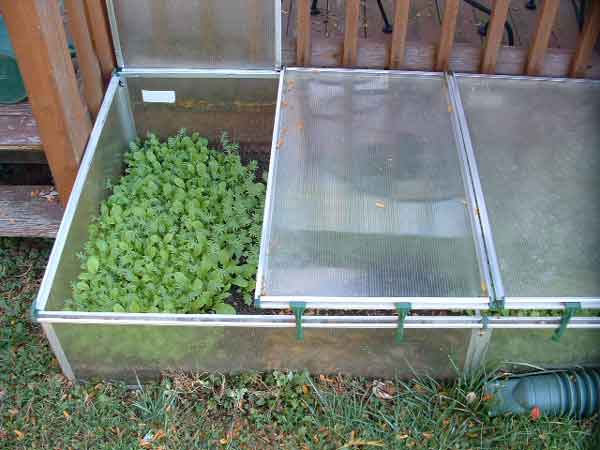
Cold Frame Gardening
For something that is so simple and relatively inexpensive, a cold frame can increase the productivity of your vegetable garden hugely simply by extending the effective the length of the growing season.

Background
Historically cold frames were located on the exterior of a heated green house and comprised a glazed frame with hinged glass roof called a light. These frames were unheated, hence the term "cold" frame. The idea was that seedlings initially grown in the greenhouse would be moved to the cold frames to harden them off. To harden off a seedling, it is placed within the cold frame and over a period of weeks the roof light is opened more and more, gradually acclimatising the seedlings to the outside conditions. This process helps prevent any shock when the seedlings are planted out which can cause a check in growth. This is particularly important with cauliflowers where a check in growth can result in the heads never forming properly.
Historically cold frames were located on the exterior of a heated green house and comprised a glazed frame with hinged glass roof called a light. These frames were unheated, hence the term "cold" frame. The idea was that seedlings initially grown in the greenhouse would be moved to the cold frames to harden them off. To harden off a seedling, it is placed within the cold frame and over a period of weeks the roof light is opened more and more, gradually acclimatising the seedlings to the outside conditions. This process helps prevent any shock when the seedlings are planted out which can cause a check in growth. This is particularly important with cauliflowers where a check in growth can result in the heads never forming properly.

Cold frames today
Modern cold frames have eschewed glass in favour of modern materials, generally polycarbonate. Modern polycarbonates are as clear as glass and in the double glazed variety fitted to most cold frames provide thermal insulation as good as glass. Polycarbonate does not shatter, or break harmfully and is therefore a perfect material for use in gardens where there are pets or children.
Modern cold frames have eschewed glass in favour of modern materials, generally polycarbonate. Modern polycarbonates are as clear as glass and in the double glazed variety fitted to most cold frames provide thermal insulation as good as glass. Polycarbonate does not shatter, or break harmfully and is therefore a perfect material for use in gardens where there are pets or children.

Cold Frame Gardening

No comments:
Post a Comment
Dear Visitor,
Please feel free to give your comment. Which picture is the best?
Thanks for your comment.